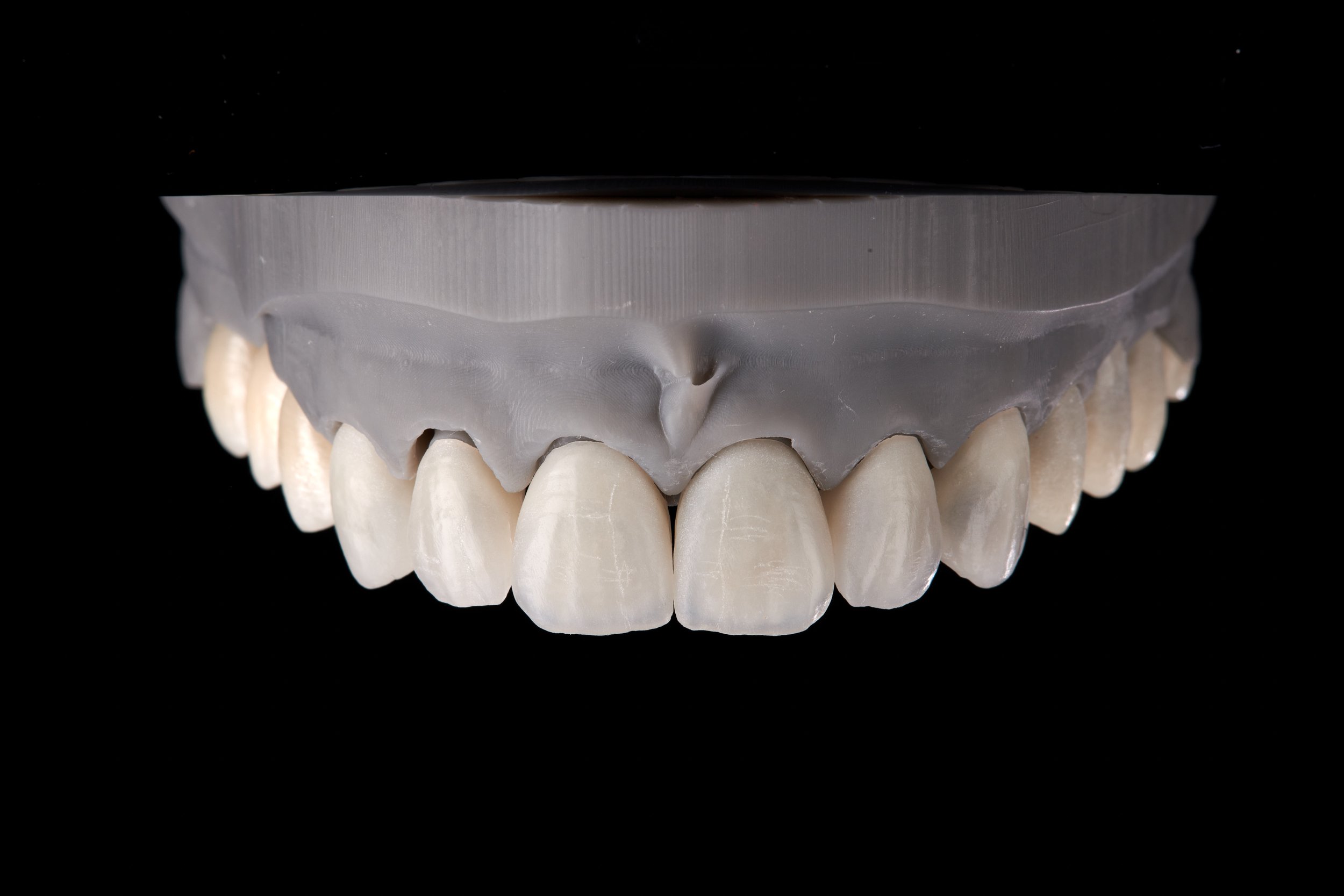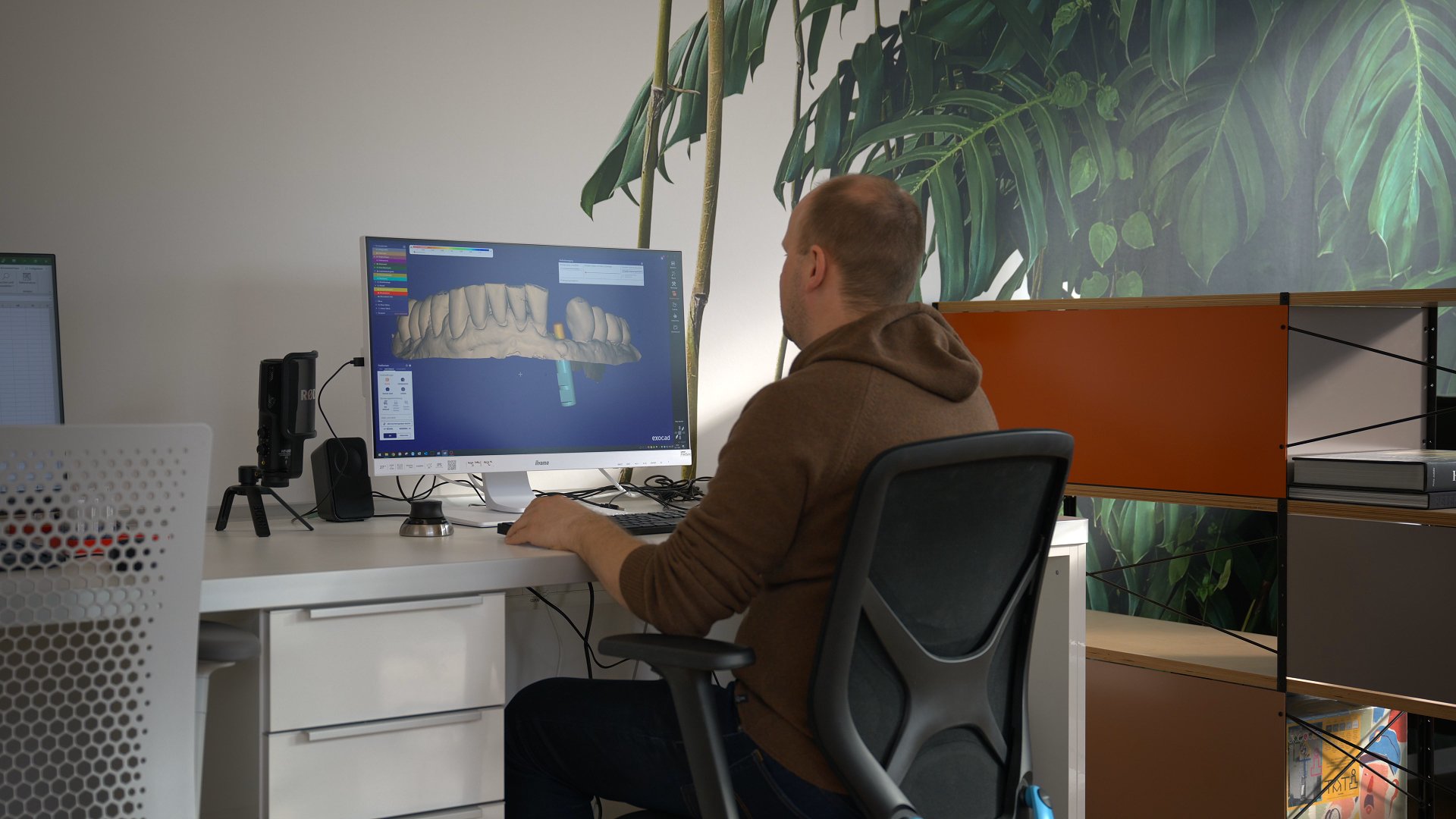Five dental challenges & how digital dentistry is solving them
Back in the day, when I was still working with analog methods, my approach to treatment planning was thorough and systematic. Nevertheless, the results were inconsistent and sometimes significantly different from what I expected. This inconsistency was not just a minor inconvenience - it was a major source of frustration for me.
Analog methods can cause frustrating problems in dental clinics
To give you an example: I once had a patient who needed new crowns in the upper jaw due to caries disease. As usual, I prepped the teeth, took an impression and a facebow record, and then sent everything to the lab.
A week later, when the ceramic crowns came back for try-in, there was a big surprise: The crowns fit on the teeth but didn’t align with the patient’s occlusal plane and pupillary line. They looked terrible in the patient’s face, and it was impossible to chew on them properly. Adjustments were impossible, so the technician and I had to start all over again!
After reviewing the clinical and lab steps, we discovered the cause of the problem: An ill-fitted facebow in the dental chair led to incorrect assumptions in the lab, which then caused all the trouble.
Digital workflows enable predictable and efficient treatment outcomes
Thanks to digital dentistry, these issues are now behind me. Digital technology has made my workflow more predictable and efficient, reducing the guesswork and frustration that once plagued my practice.
In this article, we'll explore the major problems dentists face with analog methods and how digital dentistry offers effective solutions. By the end, you will not only be aware of all the common challenges in traditional dentistry, but we will also show you how digital tools can turn these obstacles into streamlined processes, leading to better diagnosis, treatment planning, and patient outcomes.
“With advanced digital tools such as 4D jaw movement tracking and intraoral scanners, my practice has been completely transformed.”
— Dr. Stefan Scholz, co-owner of the clinic dentprevent and co-founder of dentesthetics
Five common problems when working with analog dental techniques
Today we look at five common problems in traditional analog dentistry that affect many of us - dentists, technicians and patients alike:
inconsistent & incomplete clinical records
suboptimal treatment planning
poor occlusal lab designs
time-consuming occlusal adjustments
and ceramic failures.
When I was still working analog, I tried to fight these problems over and over again. The unpredictable results, additional try-ins, and the occasional need for redos were frustrating, but also time-consuming and costly. However, I can confidently say that implementing digital dentistry in my dental clinic has greatly reduced these problems.
So, let's dive into the details of these problems and explore how digital dentistry can transform your practice by solving them. I'll show you how different digital solutions can help you achieve a smoother workflow, better patient outcomes and a more satisfying professional experience.

Want to find out more?
Sign up for our newsletter
on digital dentistry!
Problem 1: Inconsistent and incomplete clinical records
In the past, I frequently encountered issues with inconsistent and incomplete clinical records, particularly when using analog methods like the facebow transfer. These records, used to capture the spatial relationship of the jaws, were often not reproducible and unreliable. Studies show that the average reproducibility of facebow transfer records is around 70%, even in experienced hands. This inconsistency often resulted in misaligned occlusions and required multiple adjustments.
The digital solution: 4D jaw motion tracking
But what’s the digital alternative? 4D jaw motion data offers a powerful solution! Jaw motion trackers can precisely capture jaw movements and convert this data into digital files. These files can be seamlessly integrated with intraoral scans. This technology ensures that the lab design restorations are based on true and reproducible records of jaw movements and correct 3D positioning of the upper and lower jaw scans relative to the patient's face. Using motion data enhances the overall efficiency and accuracy of your dental restorations – no more time-consuming rework!
Problem 2: Suboptimal treatment planning
Suboptimal treatment planning is another significant issue. Traditional diagnostic methods may miss crucial details due to a lack of comprehensive data. Our restricted view can lead to under-diagnosed conditions and ineffective treatments.
The digital solution: patient avatars
Digital diagnosis, on the other hand, provide a detailed and holistic view of the patient's condition. By creating a digital avatar of the patient, we can see and diagnose issues with far greater accuracy. Gathering this detailed digital data leads to treatment planning and execution, ensuring better patient outcomes.
By allowing the digital lab to access the digital avatar, the dentist and dental technician can work together seamlessly to plan the various steps of the treatment process. As a team, they can explore and refine solutions within the computer software, ultimately streamlining the process to perfection before any physical work begins in the patient's mouth.
Problem 3: Poor lab designs
Traditional lab designs often fail to capture the natural shape of occlusal surfaces. This restriction is mainly due to the physical limitations of conventional impressions and the misinterpretation by lab technicians. These designs usually require extensive adjustments to feel natural to the patient.
The digital solution: 4D designs from a digital dental lab
4D digital dentistry allows us to incorporate real patient movements and occlusal relationships into the design process. With the help of motion, you can create restorations that mimic natural function and aesthetics. This reduces the need for post-cementation adjustments and ensures a higher standard of patient care.
Choosing a lab that can process and apply digital information and motion data makes all the difference in providing your patients with natural, beautiful and long-lasting restorations.
Problem 4: Time-consuming occlusal adjustments
Manual occlusal adjustments can be tricky to perform accurately and add stress to the ceramic material. Furthermore, they are time-consuming for both practitioner and patient. Plus, those adjustments are already changing a potentially ideal cusp-fissure relationship and occlusion to the opposing jaw for the worse.
The digital solution: Precise digital modifications
Digital workflows allow precise modifications in the design software before starting with the fabrication. Thanks to the modifications, the restorations fit accurately the first time. The need for chairside adjustments is minimized or even eliminated. By reducing their time in the dental chair, you improve patient satisfaction as well as clinical efficiency.
Problem 5: Ceramic failures
Ceramic failures are a major issue in dental practice. Traditional methods often fail to address the root cause of this problem: cracks or fractures occur due to inappropriate load distribution on the ceramic materials during function in the patient's mouth. This occurs because the ceramic design was sub-optimal prior to fabrication and cementation.
The digital solution: Digital try-ins in design software
Design software allows you to perform digital try-ins and adjustments before cementing it in the patient's mouth. You can create the ideal design before it is even manufactured! The design software ensures that all restorations are optimally designed and adapted to each patient's unique anatomical features and dental physiognomy.
Learn about new dental technologies
At dentesthetics, we are committed to supporting fellow dentists and dental technicians. In our digital dental masterclass, we provide free educational videos that help you to get started with digital dentistry. The online program is completed by our in-person offers: Hands-on dental courses, work shadowing opportunities, and customized workshops that can be tailored to your team's needs.
Are you ready to implement digital tools into your clinic?
Now, we’ve walked through some of the most frustrating issues dentists face with traditional analog methods: inconsistent clinical records, insufficient diagnostics, poor occlusal designs, time-consuming adjustments, and ceramic failures.
Making the switch to digital dentistry can solve those problems for you. By implementing digital tools into your clinic, you can enhance the quality of care for your patients, streamline workflows, and improve overall outcomes. Sounds too good to be true? It’s not! The reality is that a 4D workflow is highly predictable and precise enough to cement every restoration upon try-in. This is obviously a great leap forward in saving time and boosting efficiency.


